Pietro Falco
Towards Autonomous Reinforcement Learning for Real-World Robotic Manipulation with Large Language Models
Mar 07, 2025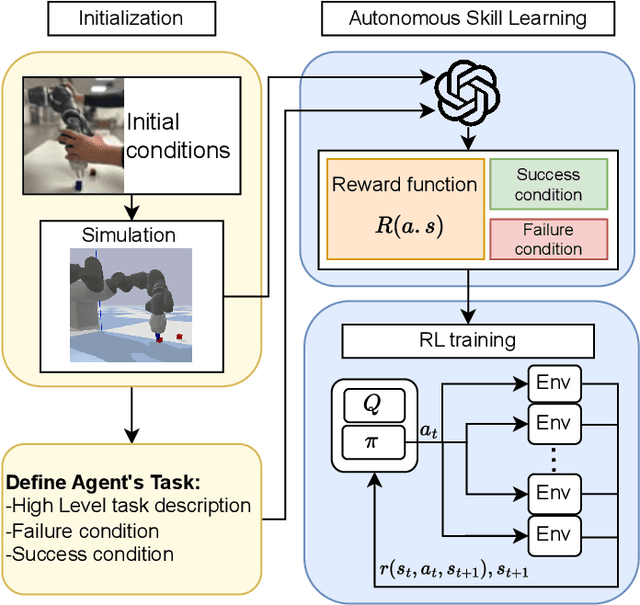
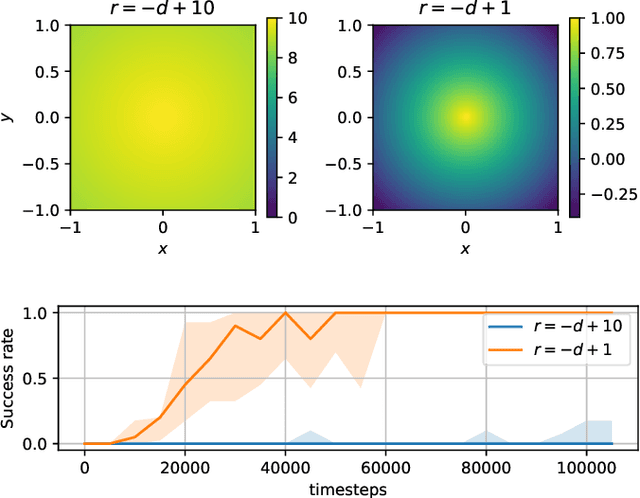
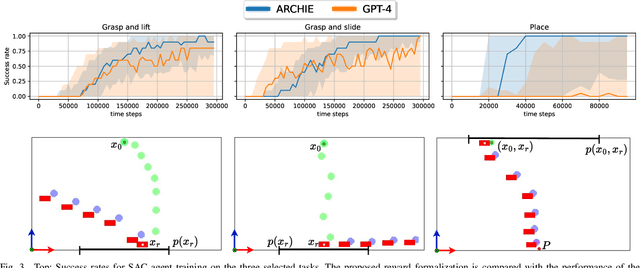
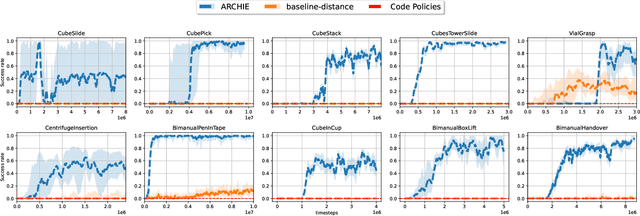
Abstract:Recent advancements in Large Language Models (LLMs) and Visual Language Models (VLMs) have significantly impacted robotics, enabling high-level semantic motion planning applications. Reinforcement Learning (RL), a complementary paradigm, enables agents to autonomously optimize complex behaviors through interaction and reward signals. However, designing effective reward functions for RL remains challenging, especially in real-world tasks where sparse rewards are insufficient and dense rewards require elaborate design. In this work, we propose Autonomous Reinforcement learning for Complex HumanInformed Environments (ARCHIE), an unsupervised pipeline leveraging GPT-4, a pre-trained LLM, to generate reward functions directly from natural language task descriptions. The rewards are used to train RL agents in simulated environments, where we formalize the reward generation process to enhance feasibility. Additionally, GPT-4 automates the coding of task success criteria, creating a fully automated, one-shot procedure for translating human-readable text into deployable robot skills. Our approach is validated through extensive simulated experiments on single-arm and bi-manual manipulation tasks using an ABB YuMi collaborative robot, highlighting its practicality and effectiveness. Tasks are demonstrated on the real robot setup.
Comparison between Behavior Trees and Finite State Machines
May 25, 2024



Abstract:Behavior Trees (BTs) were first conceived in the computer games industry as a tool to model agent behavior, but they received interest also in the robotics community as an alternative policy design to Finite State Machines (FSMs). The advantages of BTs over FSMs had been highlighted in many works, but there is no thorough practical comparison of the two designs. Such a comparison is particularly relevant in the robotic industry, where FSMs have been the state-of-the-art policy representation for robot control for many years. In this work we shed light on this matter by comparing how BTs and FSMs behave when controlling a robot in a mobile manipulation task. The comparison is made in terms of reactivity, modularity, readability, and design. We propose metrics for each of these properties, being aware that while some are tangible and objective, others are more subjective and implementation dependent. The practical comparison is performed in a simulation environment with validation on a real robot. We find that although the robot's behavior during task solving is independent on the policy representation, maintaining a BT rather than an FSM becomes easier as the task increases in complexity.
A Framework for Learning Behavior Trees in Collaborative Robotic Applications
Mar 20, 2023



Abstract:In modern industrial collaborative robotic applications, it is desirable to create robot programs automatically, intuitively, and time-efficiently. Moreover, robots need to be controlled by reactive policies to face the unpredictability of the environment they operate in. In this paper we propose a framework that combines a method that learns Behavior Trees (BTs) from demonstration with a method that evolves them with Genetic Programming (GP) for collaborative robotic applications. The main contribution of this paper is to show that by combining the two learning methods we obtain a method that allows non-expert users to semi-automatically, time-efficiently, and interactively generate BTs. We validate the framework with a series of manipulation experiments. The BT is fully learnt in simulation and then transferred to a real collaborative robot.
On the programming effort required to generate Behavior Trees and Finite State Machines for robotic applications
Sep 15, 2022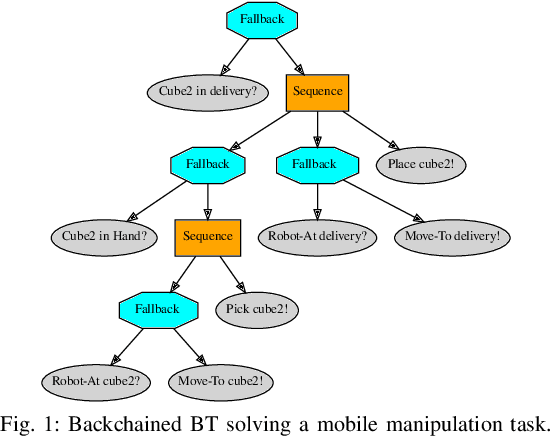
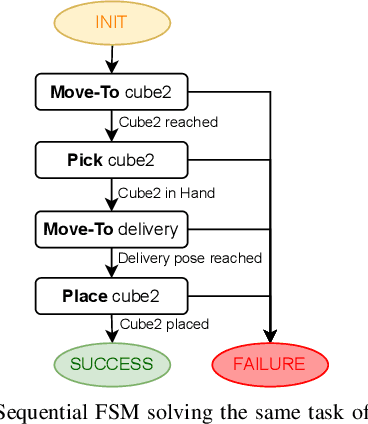
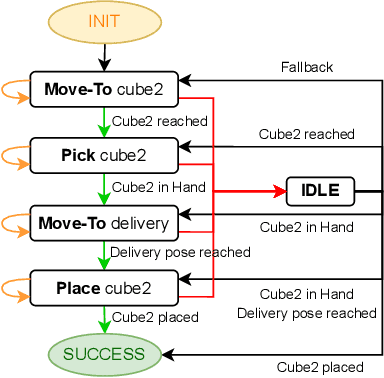
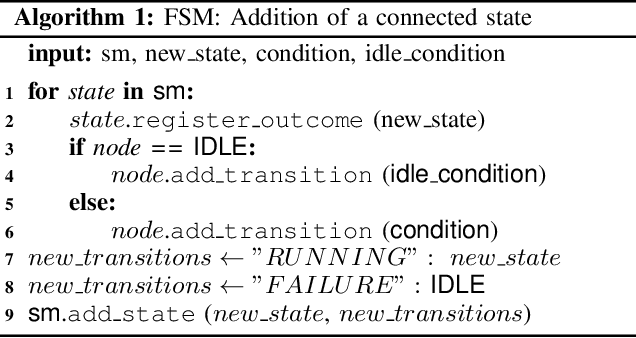
Abstract:In this paper we provide a practical demonstration of how the modularity in a Behavior Tree (BT) decreases the effort in programming a robot task when compared to a Finite State Machine (FSM). In recent years the way to represent a task plan to control an autonomous agent has been shifting from the standard FSM towards BTs. Many works in the literature have highlighted and proven the benefits of such design compared to standard approaches, especially in terms of modularity, reactivity and human readability. However, these works have often failed in providing a tangible comparison in the implementation of those policies and the programming effort required to modify them. This is a relevant aspect in many robotic applications, where the design choice is dictated both by the robustness of the policy and by the time required to program it. In this work, we compare backward chained BTs with a fault-tolerant design of FSMs by evaluating the cost to modify them. We validate the analysis with a set of experiments in a simulation environment where a mobile manipulator solves an item fetching task.
Learning Deep Neural Policies with Stability Guarantees
Mar 30, 2021
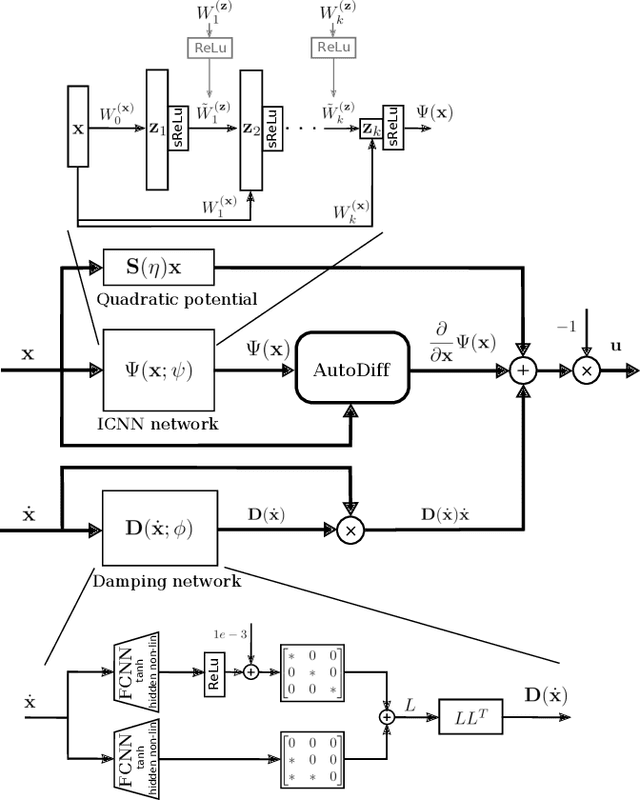


Abstract:Reinforcement learning (RL) has been successfully used to solve various robotic control tasks. However, most of the existing works do not address the issue of control stability. This is in sharp contrast to the control theory community where the well-established norm is to prove stability whenever a control law is synthesized. What makes guaranteeing stability during RL difficult is threefold: non interpretable neural network policies, unknown system dynamics and random exploration. We contribute towards solving the stable RL problem in the context of robotic manipulation that may involve physical contact with the environment. Our solution is derived from physics-based prior that originates from Lagrangian mechanics and does not involve learning any dynamics model. We show how to parameterize the resulting $\textit{energy shaping}$ policy as a deep neural network that consists of a convex potential function and a velocity dependent damping component. Our experiments, that include a real-world peg insertion task by a 7-DOF robot, validate the proposed policy structure and demonstrate the benefits of stability in RL.
Learning Behavior Trees with Genetic Programming in Unpredictable Environments
Nov 06, 2020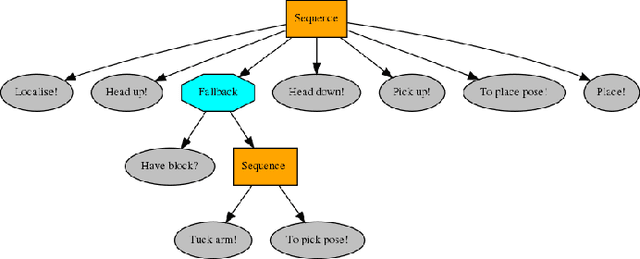

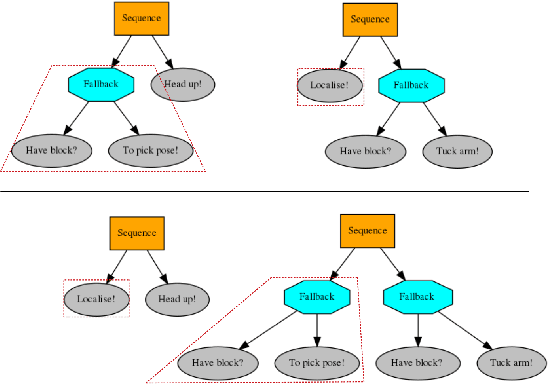

Abstract:Modern industrial applications require robots to be able to operate in unpredictable environments, and programs to be created with a minimal effort, as there may be frequent changes to the task. In this paper, we show that genetic programming can be effectively used to learn the structure of a behavior tree (BT) to solve a robotic task in an unpredictable environment. Moreover, we propose to use a simple simulator for the learning and demonstrate that the learned BTs can solve the same task in a realistic simulator, reaching convergence without the need for task specific heuristics. The learned solution is tolerant to faults, making our method appealing for real robotic applications.
Learning Stable Normalizing-Flow Control for Robotic Manipulation
Oct 30, 2020



Abstract:Reinforcement Learning (RL) of robotic manipulation skills, despite its impressive successes, stands to benefit from incorporating domain knowledge from control theory. One of the most important properties that is of interest is control stability. Ideally, one would like to achieve stability guarantees while staying within the framework of state-of-the-art deep RL algorithms. Such a solution does not exist in general, especially one that scales to complex manipulation tasks. We contribute towards closing this gap by introducing $\textit{normalizing-flow}$ control structure, that can be deployed in any latest deep RL algorithms. While stable exploration is not guaranteed, our method is designed to ultimately produce deterministic controllers with provable stability. In addition to demonstrating our method on challenging contact-rich manipulation tasks, we also show that it is possible to achieve considerable exploration efficiency--reduced state space coverage and actuation efforts--without losing learning efficiency.
Stability-Guaranteed Reinforcement Learning for Contact-rich Manipulation
Apr 22, 2020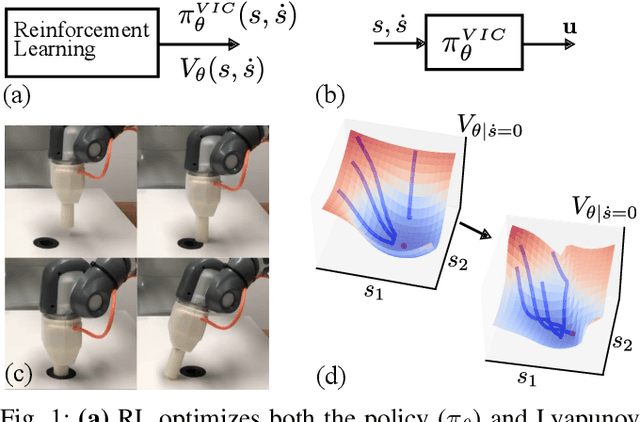
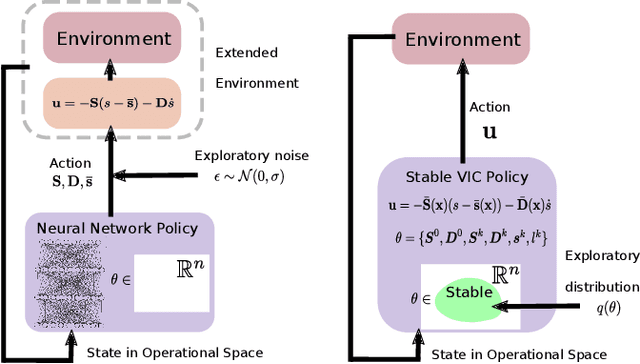
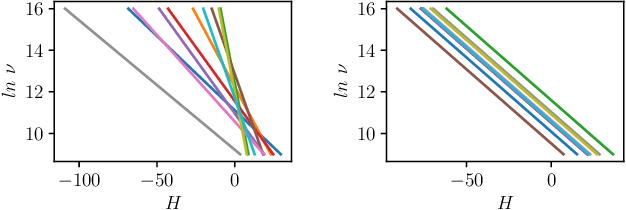
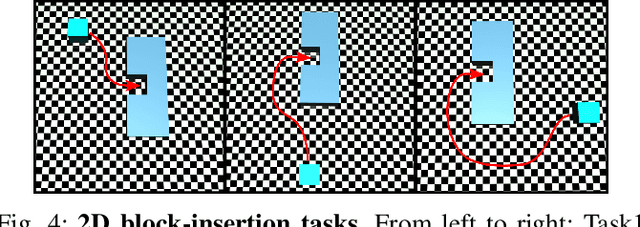
Abstract:Reinforcement learning (RL) has had its fair share of success in contact-rich manipulation tasks but it still lags behind in benefiting from advances in robot control theory such as impedance control and stability guarantees. Recently, the concept of variable impedance control (VIC) was adopted into RL with encouraging results. However, the more important issue of stability remains unaddressed. To clarify the challenge in stable RL, we introduce the term all-the-time-stability that unambiguously means that every possible rollout will be stability certified. Our contribution is a model-free RL method that not only adopts VIC but also achieves all-the-time-stability. Building on a recently proposed stable VIC controller as the policy parameterization, we introduce a novel policy search algorithm that is inspired by Cross-Entropy Method and inherently guarantees stability. As a part of our extensive experimental studies, we report, to the best of our knowledge, the first successful application of RL with all-the-time-stability on the benchmark problem of peg-in-hole.
A Transfer Learning Approach to Cross-Modal Object Recognition: From Visual Observation to Robotic Haptic Exploration
Jan 18, 2020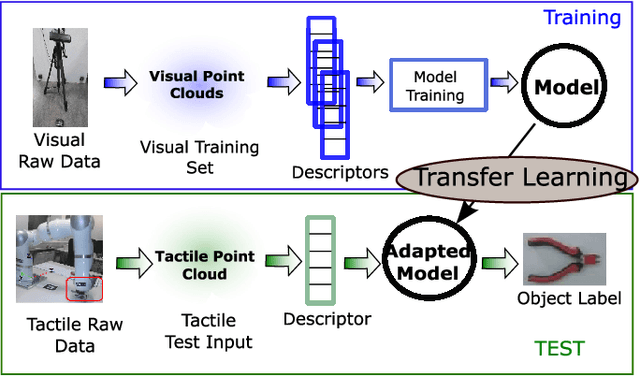
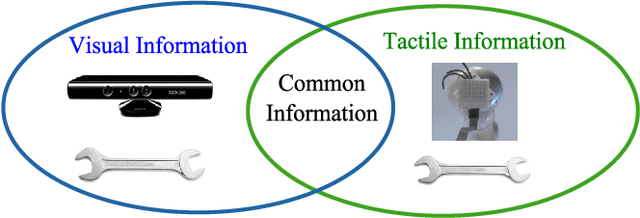
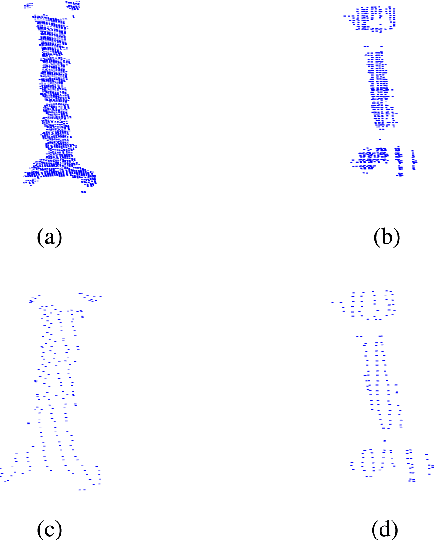
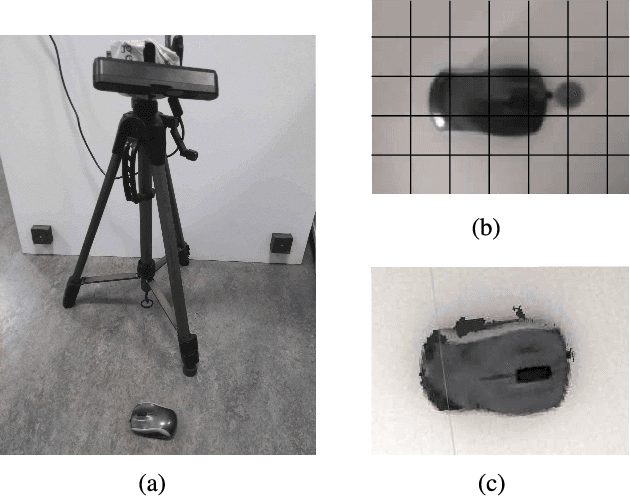
Abstract:In this work, we introduce the problem of cross-modal visuo-tactile object recognition with robotic active exploration. With this term, we mean that the robot observes a set of objects with visual perception and, later on, it is able to recognize such objects only with tactile exploration, without having touched any object before. Using a machine learning terminology, in our application we have a visual training set and a tactile test set, or vice versa. To tackle this problem, we propose an approach constituted by four steps: finding a visuo-tactile common representation, defining a suitable set of features, transferring the features across the domains, and classifying the objects. We show the results of our approach using a set of 15 objects, collecting 40 visual examples and five tactile examples for each object. The proposed approach achieves an accuracy of 94.7%, which is comparable with the accuracy of the monomodal case, i.e., when using visual data both as training set and test set. Moreover, it performs well compared to the human ability, which we have roughly estimated carrying out an experiment with ten participants.
A Human Action Descriptor Based on Motion Coordination
Nov 20, 2019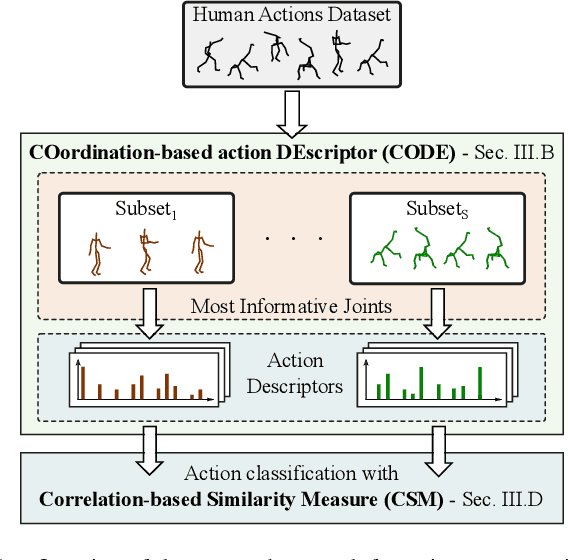

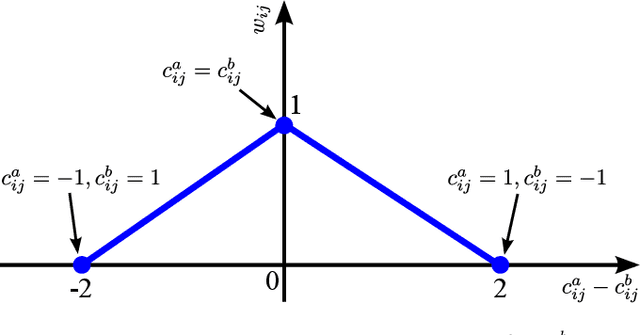
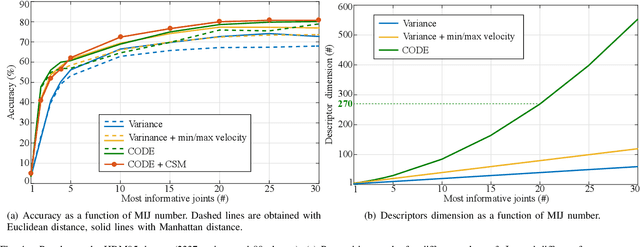
Abstract:In this paper, we present a descriptor for human whole-body actions based on motion coordination. We exploit the principle, well known in neuromechanics, that humans move their joints in a coordinated fashion. Our coordination-based descriptor (CODE) is computed by two main steps. The first step is to identify the most informative joints which characterize the motion. The second step enriches the descriptor considering minimum and maximum joint velocities and the correlations between the most informative joints. In order to compute the distances between action descriptors, we propose a novel correlation-based similarity measure. The performance of CODE is tested on two public datasets, namely HDM05 and Berkeley MHAD, and compared with state-of-the-art approaches, showing recognition results.
 Add to Chrome
Add to Chrome Add to Firefox
Add to Firefox Add to Edge
Add to Edge